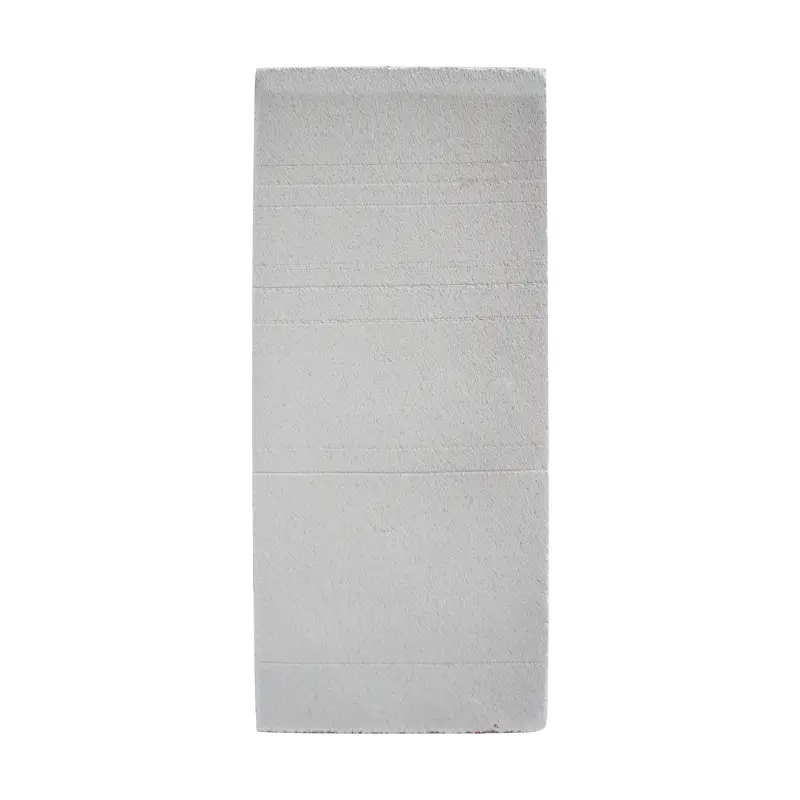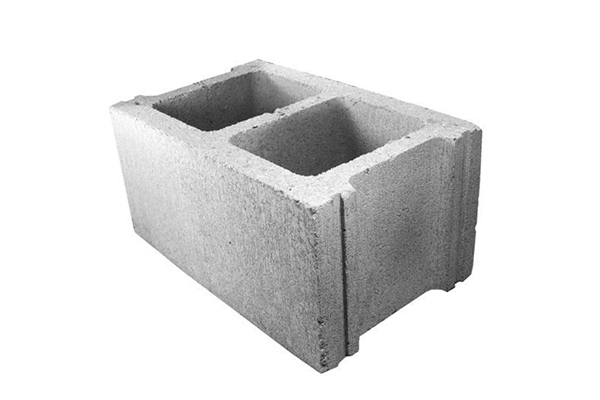This article provides a comprehensive comparison between AAC (Autoclaved Aerated Concrete) blocks and traditional concrete blocks, focusing on their properties, advantages, and disadvantages in construction. It’s aimed at helping builders, developers, and procurement officers like Mark Thompson make informed decisions when sourcing materials, particularly from international suppliers like BTZmoc in China. Understanding these differences is crucial for optimizing project costs, ensuring structural integrity, and meeting building code requirements. This article is worth reading because it offers practical, real-world insights based on direct industry experience, ultimately helping you choose the best building material for your specific needs.
1. What is AAC Block and How Does it Compare to Concrete Block?
AAC block, or Autoclaved Aerated Concrete block, is a lightweight, precast building material made from a mixture of cement, lime, sand, water, and an expansion agent (typically aluminum powder). This mixture is poured into molds, and the aluminum powder reacts with the other ingredients, creating millions of tiny air pockets. The blocks are then cured under heat and pressure in an autoclave, giving them their unique properties.
Concrete blocks, on the other hand, are typically made from Portland cement, aggregates (such as sand and gravel), and water. They are denser and heavier than AAC blocks. There are different types, including solid concrete blocks and hollow concrete blocks (CHB). Concrete block masonry is a traditional construction method used worldwide.

2. What are the Key Advantages of Using AAC Blocks?
AAC blocks offer several advantages over traditional concrete blocks:
- Lightweight: AAC blocks are significantly lighter than concrete blocks, reducing the dead load on buildings and potentially lowering foundation costs. This is a key selling point for developers focusing on high-rise constructions or projects in areas with poor soil conditions.
- Excellent Thermal Insulation: The air pockets within AAC blocks provide superior thermal insulation compared to solid concrete. This translates to lower energy bills for heating and cooling, making them ideal for energy-efficient construction.
- Faster Construction: Due to their larger size and lighter weight, AAC blocks can be installed more quickly than smaller, heavier concrete blocks. This accelerates the construction process, thereby expediting construction project timelines and reducing labor costs.
- Fire Resistance: AAC is a non-combustible material and offers excellent fire resistance, providing enhanced safety for building occupants.
- Sound Insulation Excellent acoustic absorption properties.
3. How Does AAC Block’s Thermal Performance Compare to Concrete Block?
AAC block has significantly lower thermal conductivity than concrete block. This means that AAC is a much better insulator, reducing heat transfer through walls. This is particularly important in regions with extreme weather conditions, where maintaining a comfortable indoor temperature is crucial. In summer, AAC helps keep buildings cool, and in winter, it helps retain heat. This superior thermal performance directly translates to reduced energy consumption for heating and cooling systems. For example, using Aluminium pastes for aerated concrete from BTZmoc ensures optimal gas generation during AAC production, resulting in consistent, high-quality insulation.
4. Is AAC Block Strong Enough for Structural Applications?
While AAC block is lighter than concrete block, it still possesses sufficient compressive strength for many structural applications. AAC blocks come in various density grades, allowing engineers to choose the appropriate strength for specific load-bearing requirements. For high-rise buildings or structures requiring very high compressive and shear bond strengths, reinforced AAC panels (like ALC Wallboard) can be used. These panels incorporate steel reinforcement for added strength and stability. While high ductile fiber-reinforced concrete might offer superior strength in some niche cases, AAC provides a balance of strength and lightweight advantages for most common construction needs.
5. What about the Environmental Impact: AAC vs. Concrete Block?
AAC block is generally considered a more sustainable building material than concrete block for several reasons:
- Lower Embodied Energy: The production of AAC requires less energy than the production of cement, the main component of concrete blocks.
- Resource Efficiency: AAC production often utilizes fly ash, a byproduct of coal-fired power plants, reducing the need for new raw materials and diverting waste from landfills. Addressing the problem of fly ash disposal is a significant environmental benefit.
- Reduced Transportation Emissions: The lightweight nature of AAC blocks means that fewer trucks are needed to transport them to the construction site, reducing fuel consumption and emissions.
- Recyclability: AAC is recyclable construction material.
6. Cost Considerations: AAC Block vs. Concrete Block (Initial & Long-Term)
The initial cost of AAC blocks can sometimes be higher than concrete blocks, depending on local market conditions and availability. However, when considering the total life-cycle cost, AAC often proves to be more economical. The faster construction process, reduced labor costs, and lower energy bills over the building’s lifespan can offset the higher initial investment. A comprehensive comparative analysis, considering a social discount rate for cost-benefit analysis, often favors AAC blocks in a 50-year consideration.
7. Installation and Workability: Which is Easier to Use, AAC or Concrete Block?
AAC blocks are generally easier to work with than concrete blocks. Their larger size and lighter weight make them easier to handle and install. They can also be easily cut and shaped with standard tools, allowing for greater flexibility in design and construction. This simplicity of installation contributes to faster construction times and reduced labor costs. Grooved AAC blocks, for example, offer enhanced ease of handling and improved alignment during construction.

8. Meeting Building Codes and Standards with AAC and Concrete Block
Both AAC and concrete blocks can be used to meet building codes and standards, but it’s crucial to ensure that the specific products you choose comply with local regulations. This includes checking for certifications like ISO standards, building code compliance documentation, and material safety data sheets (MSDS). For buyers like Mark Thompson, verifying these certifications is a key concern when purchasing from international suppliers. BTZmoc, for example, ensures its products, including AAC Block, meet relevant international standards.
9. Sourcing AAC and Concrete Block Materials: Key Considerations for Buyers Like Mark Thompson
Mark Thompson, as a company owner and procurement officer, needs to consider several factors when sourcing building materials:
- Quality Consistency: The aluminum paste used in AAC production must have consistent gas generation performance to ensure uniform density and strength in the final product. For concrete blocks, the quality of the cement and aggregates is critical.
- Structural Integrity: The dimensional accuracy of both AAC and concrete blocks is essential for proper installation and structural integrity.
- Logistics: Shipping bulky materials like AAC and concrete blocks requires careful planning to minimize transportation costs and prevent damage.
- Payment Methods: Secure and reliable payment methods are crucial for international transactions.
- Communication: Clear and efficient communication with the supplier’s sales representatives is essential to avoid delays and misunderstandings.
Attending exhibitions, like those BTZmoc participates in, is a great way for buyers to meet suppliers, inspect products, and discuss their specific requirements.
10. BTZmoc: Your Partner for High-Quality AAC Products and Aluminum Paste
BTZmoc is a leading Chinese factory specializing in building materials for aerated concrete. With 7 production lines, we offer a range of high-quality products, including:
- Aluminum Paste for Aerated Concrete: Our aluminum paste is specifically formulated for optimal gas generation in AAC production, ensuring consistent quality and performance. We offer various formulations to meet different AAC density requirements.
- ALC Wallboard: Our lightweight yet strong ALC wallboard provides excellent thermal and acoustic insulation, making it ideal for energy-efficient buildings.
- AAC Block: Our dimensionally accurate AAC blocks are easy to install and offer superior fire resistance and environmental friendliness.
We export our products to the USA, North America, Europe, and Australia, and we are committed to providing our customers with the highest quality products and excellent customer service. We understand the needs of buyers like Mark Thompson and are dedicated to addressing their key concerns, including quality consistency, certification compliance, and efficient logistics.
Key Takeaways:
- AAC blocks offer significant advantages over traditional concrete blocks, including lighter weight, superior thermal insulation, faster construction, and enhanced fire resistance.
- While the initial cost of AAC may be higher, the total life-cycle cost is often lower due to reduced labor, faster construction, and energy savings.
- AAC is a more sustainable building material, with lower embodied energy and the potential to utilize recycled materials like fly ash.
- When sourcing AAC or concrete blocks, buyers should prioritize quality consistency, structural integrity, certifications, logistics, and communication with the supplier.
- BTZmoc is a reliable supplier of high-quality aluminum paste, ALC wallboard, and AAC blocks, committed to meeting the needs of international buyers.
- Choosing the right material, whether it’s AAC or a specific type of concrete block, depends on the specific project needs and building codes. It’s crucial to perform a thorough evaluation before making a decision.
- Consider all the stages of the process, design, theory and practice.
- Sustainability, now a very actual point.
By considering these factors and partnering with a reputable supplier like BTZmoc, construction professionals can make informed decisions and build high-quality, energy-efficient, and sustainable structures.
Post time: 3 月-18-2025




